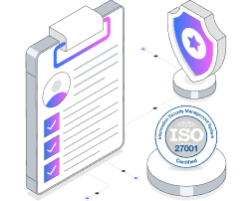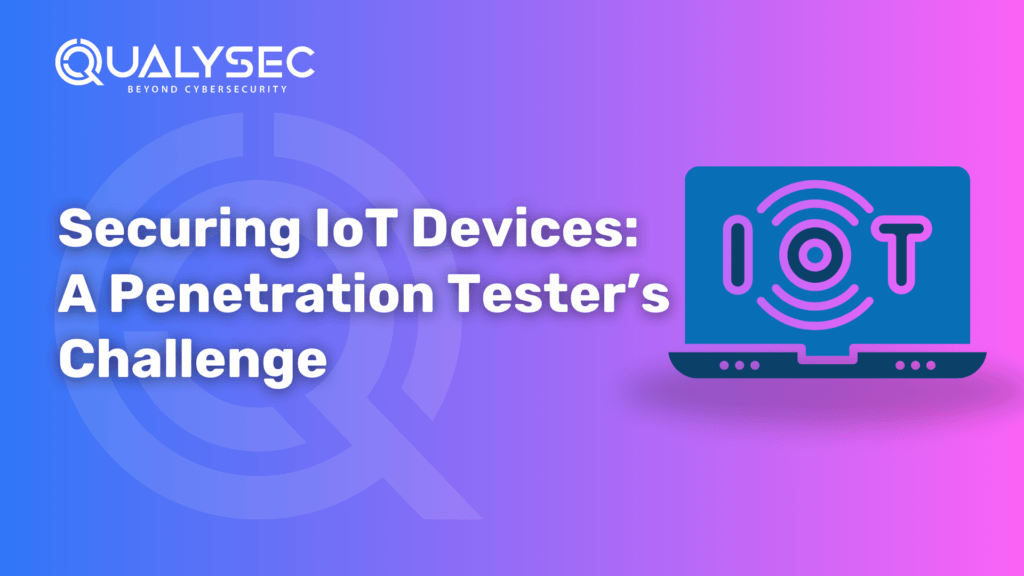Complete Guide to Performing an IoT Security Audit in 2025
The Internet of Things (IoT) has revolutionized our mode of existence, mode of work, and mode of engagement with the virtual world. From smart speakers and smart thermostats in the house to factory sensors and health monitoring systems, IoT devices envelop every aspect of our lives. In 2025, the global IoT ecosystem is not expanding—it’s overflowing, with billions of internet-connected devices communicating with one another in homes, factories, hospitals, cities, and critical infrastructure. In this hyper-connected environment, conducting regular IoT Security Audit is essential to identify vulnerabilities, safeguard data, and maintain trust in these technologies. But as more and more devices come on the market, security threats are being brought in simultaneously. Most IoT devices have default, weak passwords that will never be updated regularly or are on an insecure network and are sitting ducks for an attack. A single compromised IoT device can be the gateway to huge data breaches, process disruption, and regulatory fines. That is where IoT Security Audits are useful. Audits sit at the nexus of identifying blind spots and not vulnerabilities, regulatory and compliance monitoring, and possessing a robust defense against incessant cyberattacks. You could be a do-it-yourself home automation aficionado, a high-growth start-up that is pioneering wearables in the business, or a high-volume enterprise with tens of thousands of devices connected online in your inventory. In any case, regular audits are what it takes to keep your cyber perimeter secure. We walk you through all you need to perform an adequate IoT Security Audit in 2025—when to perform them, step-by-step instructions, tools, and checklists you can rely on. What is an IoT Security Audit? An IoT Security Check-up is a comprehensive scan of your IoT environment to sweep for threats, check for security policy compliance, and harden your overall stance. This check-up takes into account hardware, software, communication protocols, user access, and cloud connections for a vulnerability that will lead to a breach or unauthorized entry. Why Does It Matter More Than Ever? IoT devices will exceed 30 billion in 2025, and uncontrolled growth has them confronting a new danger. That is why IoT security auditing matters: In 2025, with edge computing, AI-powered devices, and 5G networks, it’s more complex—and critical—than ever to configure security. When to Perform an IoT Security Audit? Book an IoT Security Audit: Monthly or real-time security scanning for IoT critical infrastructure or healthcare IoT. Also read: What Is Iot Security Testing and Why It Matters! The IoT Security Audit Process: Step by Step Here is an approximate step-by-step guide to conducting an effective IoT Security Audit in 2025: 1. Asset Discovery and Inventory Identify all the devices on your network. Inventory shadow IoT devices—rogue devices employees have added without IT approval. 2. Risk Assessment Determine potential breach impact for each device. Consider: 3. Vulnerability Scanning Automatically scan for: 4. Configuration Review Check devices use best security practices: 5. Penetration Testing Test the network to find vulnerabilities by spoofing attacks against it. They are: Explore our recent guide on IoT Device Penetration Testing. 6. Cloud and App Integration Review Most IoT devices are communicating with cloud platforms or mobile apps. Ensure: 7. Remediation and Reporting Write findings into a report with severity levels and actionable steps. Remediate the highest impact and easiest first. 8. Follow-Up Audit Remediation completed, conduct a follow-up audit to ensure vulnerabilities have been properly remediated. Latest Penetration Testing Report Download 2025 IoT Security Audit Checklist Below is a simple 2025-specific list: Maintain an up-to-date inventory of all IoT devices Shut down unused idle ports and services Change default credentials Install the most recent firmware updates Enforce strong password policies Employ device-level encryption and TLS 1.3 Enforce multi-factor authentication (MFA) on dashboards Segregate IoT networks from business-critical infrastructure Utilize AI-powered tools to scan for anomalies in device behavior Harden API integrations Backup device configuration settings regularly All attempts at access and audit trails must be logged Check Out the Latest IoT Security Standards. Tools and Frameworks That Help Some tools and frameworks will make your IoT Security Audit a whole lot easier: Tools: Shodan – Internet-connected device search engine Nmap – Network port discovery and scanning OpenVAS – Vulnerability scanner IoT Inspector – Real-time analysis of network traffic Wireshark – Packet inspection and debugging Frameworks OWASP IoT Top 10 – Leading industry list of fundamental security vulnerabilities NIST SP 800-213 – Framework for the security of IoT devices ETSI EN 303 645 – European consumer IoT standard Zero Trust Architecture (ZTA) – Never assume, always verify Common Challenges to IoT Auditing (and Overcoming Them) 1. Device Diversity Challenge: IoT networks typically include products of a vendor more than one. Solution: Industry security certificate-based standard devices and protocols. 2. Scarce Device Resources Challenge: The vast majority of IoT devices have no power and memory for computation and, therefore, they are difficult to secure. Solution: Employ lightweight cryptography and offload security functions to edge gateways or servers. 3. No Visibility Challenge: Shadow devices might slip through your audit. Solution: Employ device discovery and monitoring tools regularly. 4. Firmware Update Management Challenge: Most devices are challenging to update over the air. Solution: Choose devices that include inherent update functions or manually set up periodic updates. 5. Legacy Devices Challenge: Some legacy devices lag below new levels of security at times. Solution: Eliminate or isolate them by using network segmentation or proxies. You might like to know: Top 10 IOT Security Company in 2025. Talk to our Cybersecurity Expert to discuss your specific needs and how we can help your business. Schedule a Call Conclusion In a time when connectivity is synonymous with progress, Internet of Things security is no longer an option—it’s a matter of strategy. As the IoT technology becomes more complex and more deeply embedded in systems of record, so do the threats that follow rise exponentially. From data theft to large-scale cyberattacks on smart grids and healthcare networks, the devastation of breached IoT security threats is nothing short of catastrophic. A





